Burrowed in the mountains of Northwest Vietnam, the Lào Cai Province is renowned for its epic scenery, ethnic culture, and tourist attractions. Within the province, tourism has exclusively developed around the town of Sapa.
Additionally, Lào Cai has become the most famous province in Northwest Vietnam and many travelers head to the mountainous landscape to escape the pandemonium of the city. The development of a tourism sector in Lào Cai ensures that in addition to fun activities, visitors will have plenty of options to explore the province’s hotels, restaurants, and markets.
Mountainous province in northwestern Vietnam
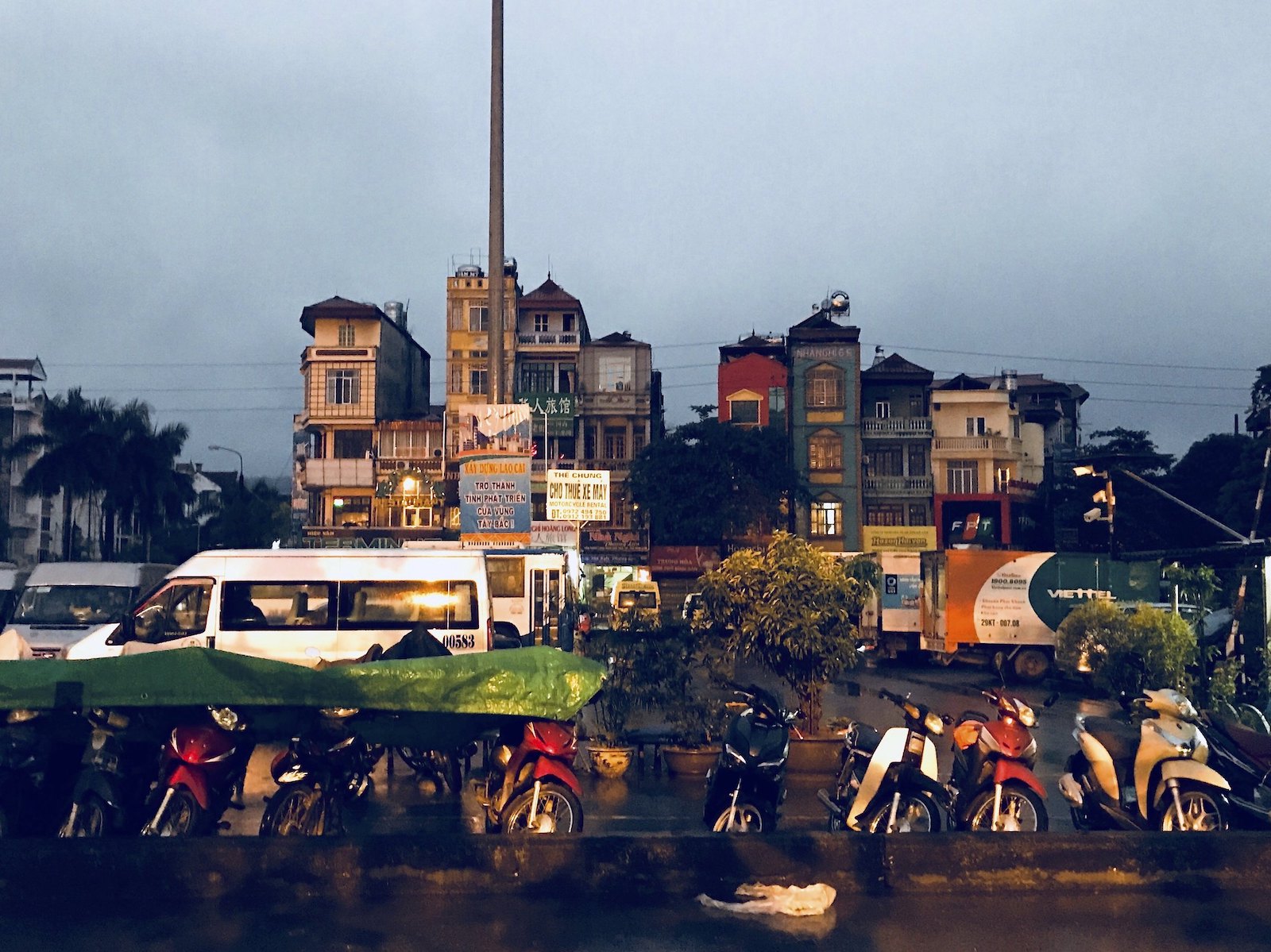
The Lào Cai Province is in far northwestern Vietnam, and it meets the border with China’s Yunnan Province. Covering about 6,364 sq km (2,457 sq mi), the province is rather large but with a sparse population. Featuring mostly remote landscapes, less than 1 million people live in the Lào Cai Province.
There are numerous sub-divisions within the province, which include the provincial capital, 8 districts, 8 towns, 12 wards, and 144 communes. Lào Cai City is the provincial capital, and it is near Vietnam’s border with China. With the Lào Cai Province being located so far in the north, most travelers to the area will come from Hanoi, which is Vietnam’s capital city.
Hanoi is about 269 km (167 mi) to the south of the Lào Cai Province. Tourists can choose to travel by car or train. Driving is the fastest way to get to Lào Cai with most journeys taking about 4 hours to complete. Overnight trains are a popular option for backpackers because of the affordable prices. Though, the ride from Hanoi to Lào Cai would take about 8 hours by rail.
History
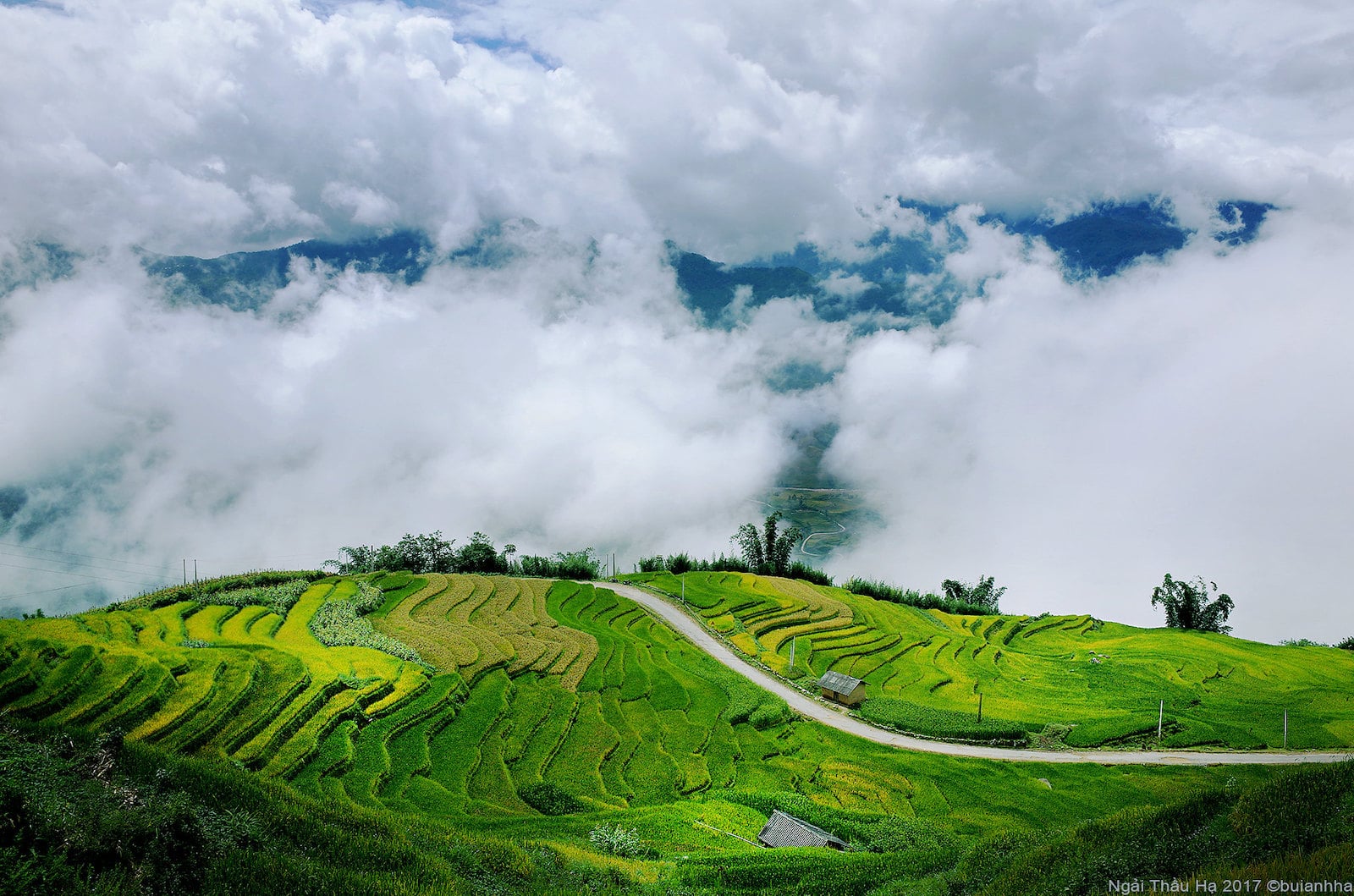
For centuries, Lào Cai has been an important trading post in Vietnam. Established centuries ago, written accounts of Lào Cai can be traced back to the year 1463 when Viet Kings used the city as a capital for the Hu’ng Hóa region. In more recent times, Lào Cai was heavily influenced by the French as they began to occupy the area in 1889.
Under French colonial rule, Lào Cai was used for both foreign military and tourism. Even the name “Lào Cai” has been traced back to the French colonial era. Written in French as “Lao Kay” but pronounced as “Lào Cai” by the locals, the origin of the name remains unclear. In the ethnic Hmong language, the provincial capital was called Lão Nhai and pronounced as Lào Cai.
The French then used their spelling, “Lao Kay” and the name stuck. In 1950, the city and province were officially named Lào Cai. Beyond the name, French influence can be seen throughout the province. Especially in places like Sapa, which was used as a retreat by French colonists.
Developing some of the mountainous areas, the French built entire towns with vacation villas so that the military and their families would have a place to relax.
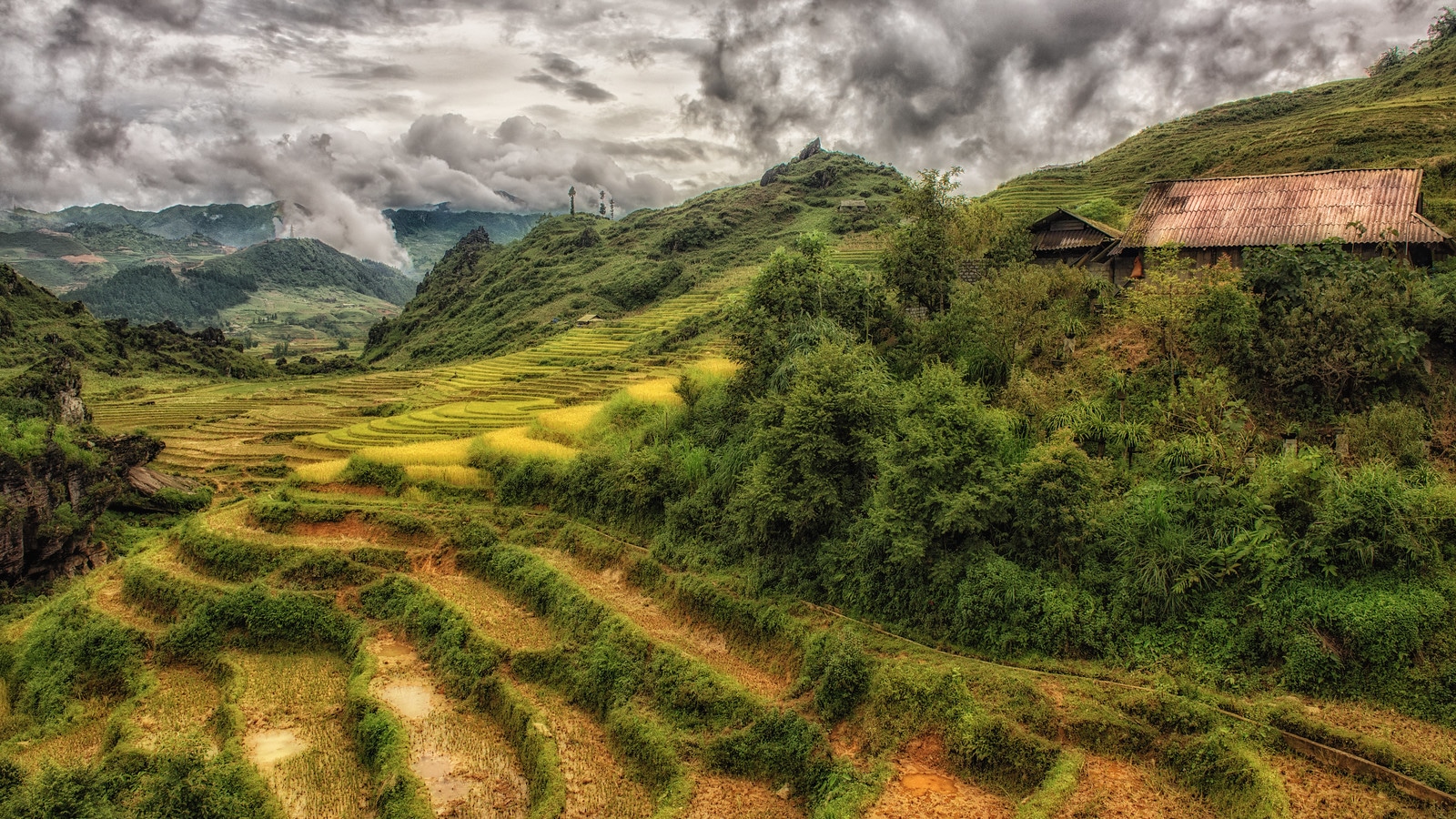
The development of Sapa as a resort town started as early as 1891 and continued until after World War II. However, shortly after the end of World War II, conflict arose between the locals and French colonizers. Many locals resisted the French and from the end of the war until 1954, many of the French colonial buildings were destroyed.
Many buildings that escaped ruin are in Sapa, as the tourist town is now known for its impressive French architecture. Though, there are other destinations within the province that visitors might come across French-inspired designs.
Fun Facts
- In 2019, a survey estimated that 730,420 people live in the Lào Cai Province
- Lào Cai is one of Vietnam’s poorest provinces
- More than 20 ethnic groups live in Lào Cai
Capital City
Named after the province, Lào Cai City is the provincial capital. The city is in the very north of the province, along the border with southwest China and it is situated at the junction of Vietnam’s Red and Nanxi Rivers. Lào Cai City is about 160 miles (260 kilometers) to the northwest of the country’s capital, Hanoi.
The main industries in Lào Cai City are tourism, timber, and the Lào Cai Railway. Historically, Lào Cai City had a tense relationship with China. In 1979, China attempted to invade the city and in response, Vietnam closed its border. For nearly two decades, the border between Lào Cai City and China remained closed. In 1993, the border was finally reopened.
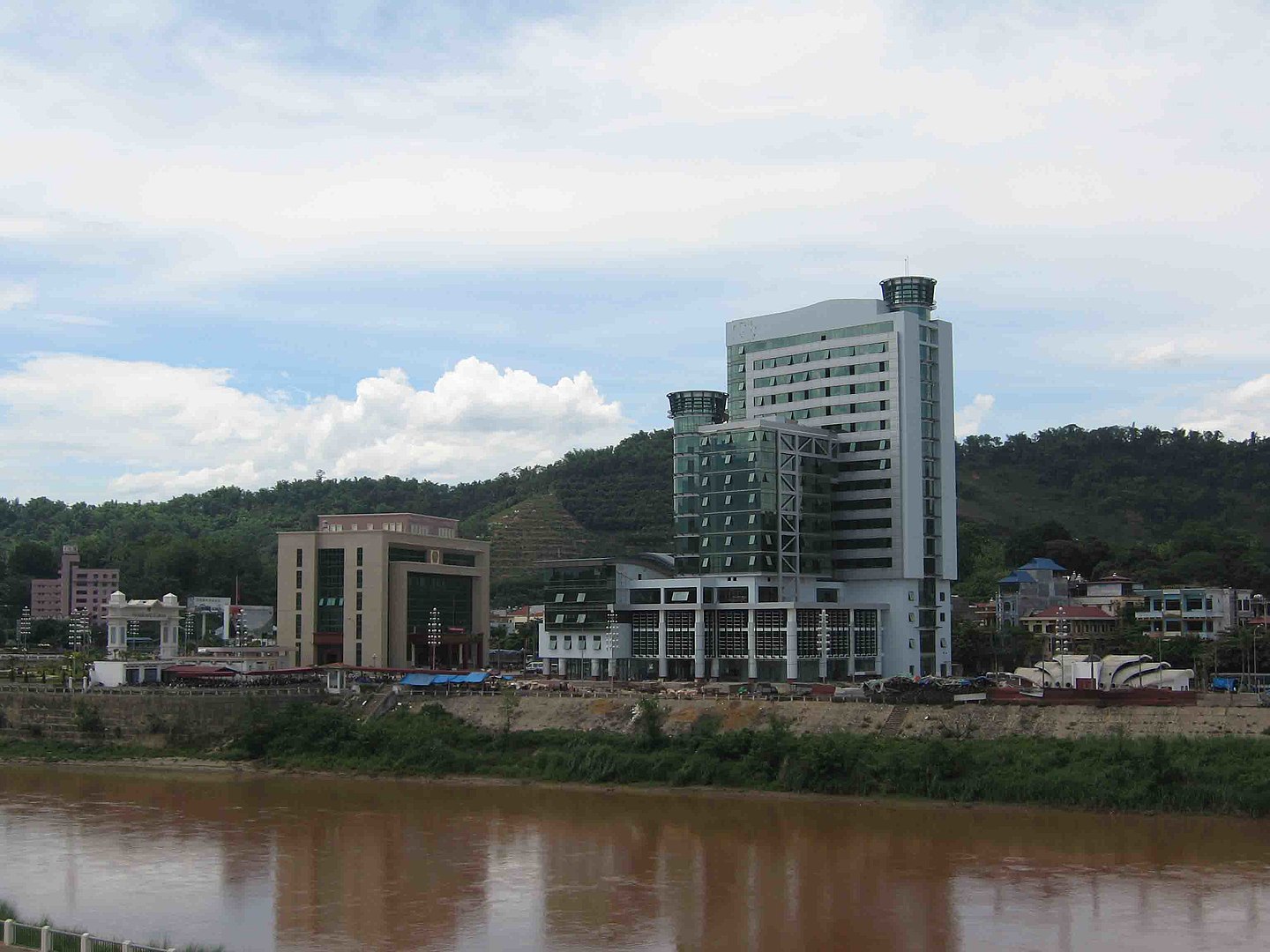
Today, the relationship between Lào Cai and China’s Hekou City is important because it has created a corridor of tourism for both countries.
As a tourist destination, Lào Cai City is one of the most popular places to visit in the province, alongside Sapa. In recent years, it is estimated that more than half a million tourists, domestic and international, traveled to Lào Cai City to explore the local scenery and culture. Highlights in and around Lào Cai include visiting the spiritual centers, ancient citadel, and Thuong Temple.
Considering that Lào Cai City is a hub for tourists, travelers should take the time to spend a few days in the city before traveling to other parts of the province. In Lào Cai City, there are numerous accommodations that have high-quality facilities and excellent services.
Coming highly rated from previous guests, the Muong Thanh Grand Lào Cai Hotel and Lào Cai Star Hotel are two of the largest establishments in the capital city. For a luxury experience, travelers should consider booking a stay at the Duc Huy Grand Hotel and Spa, which is one of the newest additions to Lào Cai City.
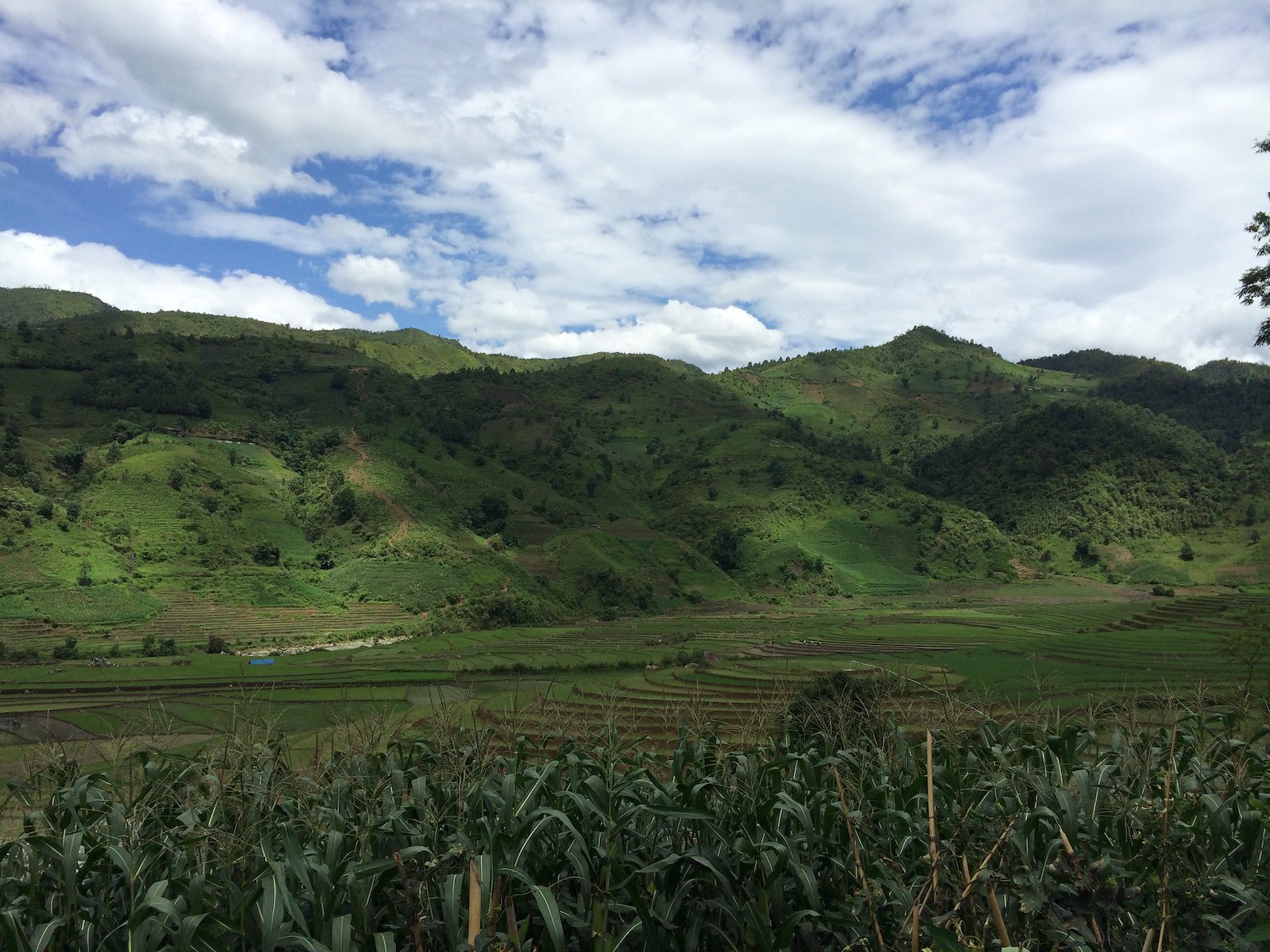
Similarly, Lao Cao City also provides visitors plenty of opportunities to explore the local cuisine. Restaurants in Lào Cai City serve a large variety of dishes that include traditional Vietnamese flavors and international favorites. A few of the city’s most recommended restaurants are the Nhà Hàng Quán Nhâu Tu Do, Pineapple Restaurant, and the Nhà Hàng Hông Long Lào Cai.
All of these restaurants are open every day and they have dine-in or takeout options.
Famous Towns in Lào Cai
Outside of Lào Cai City, the most famous towns in the province for tourists are Sapa, Bac Hà, and Ta Van. These three towns are known for their natural beauty, as well as being the home of many of the province’s ethnic minorities. Attractions in these tourist destinations include exploring the mountains, touring local villages, and visiting sacred sites.
Sapa
Sapa is often the most recognized destination in the Lào Cai Province. Heavily influenced by the French, the area’s first inhabitants are unknown. Dated back to before the 15th century, evidence of human activity is present in the form of petroglyphs, but the authors have never been discovered.
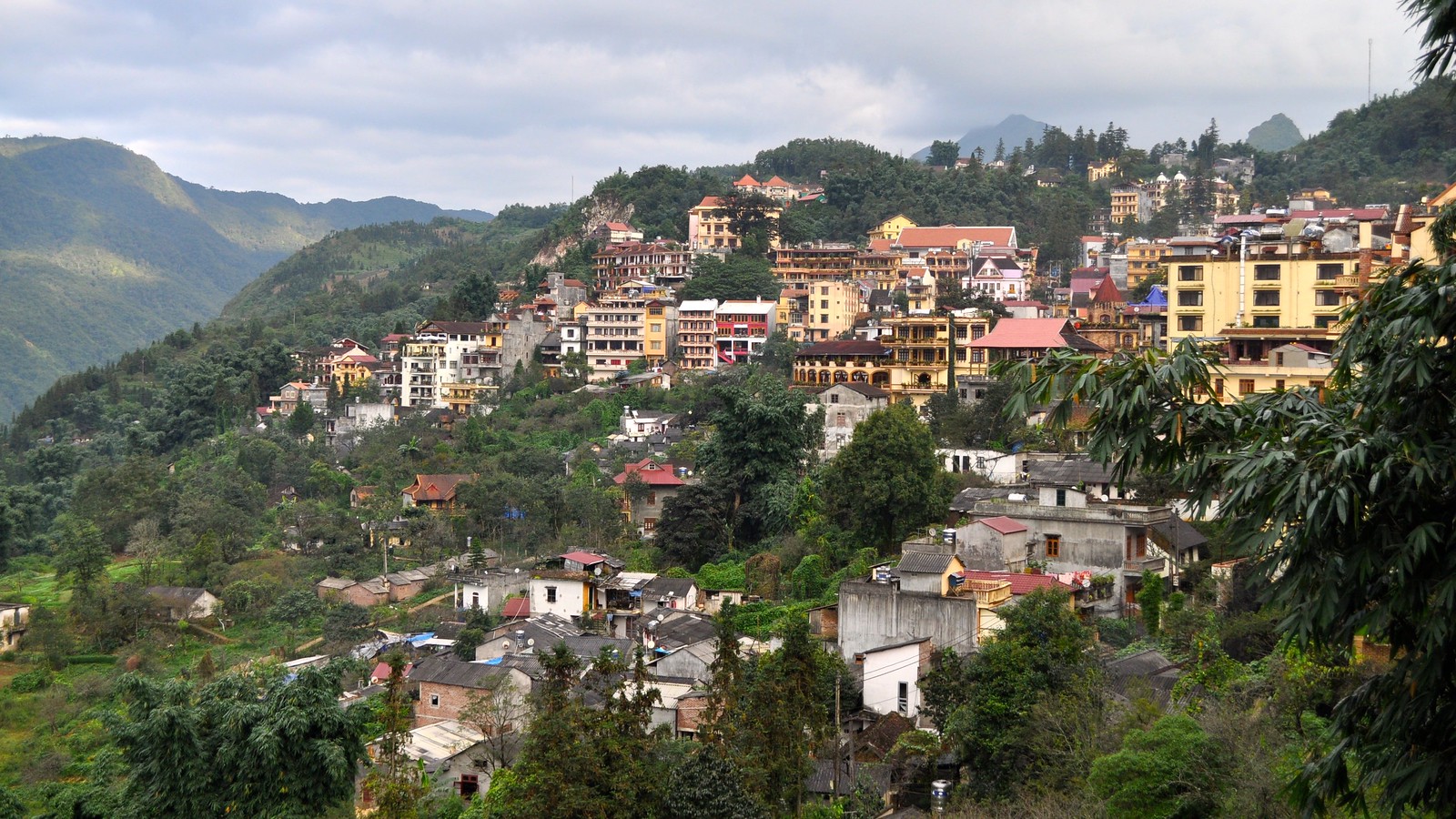
After the 15th century, the area became the home of Vietnamese ethnic minorities like the Hmong and Yao people.
For tourists, the main attractions in Sapa include Fansipan Mountain and the Hoàng Liên National Park. Both natural attractions, Fansipan Mountain is Vietnam’s tallest peak, and it has been nicknamed the ‘Roof of Indochina’. The Hoang Lieng National Park is home to Vietnam’s highest peaks, and it has become a huge destination for outdoor enthusiasts.
Tan Van
Like Bac Hà, Tan Van is a destination that is mostly driven by community-based tourism. Home to many ethnic people like the Hmong and Giay, travelers headed to Tan Van should expect to spend time getting to know the locals. Homestays are commonplace in Tan Van and many tourist activities are based around the community.
Highlights in the area include the Muong Hoa Spring, rice terraces, and rock fields.
Bac Hà
A small town that has mostly remained off the tourist radar, interest in Bac Ha is beginning to grow. Remote and surrounded by a lush landscape, tourist activities in the town include visiting the Sunday Market, arranging for homestays, and trekking through the nearby hills. Locals act as tour guides and there are a few places for tourists to stay in town.
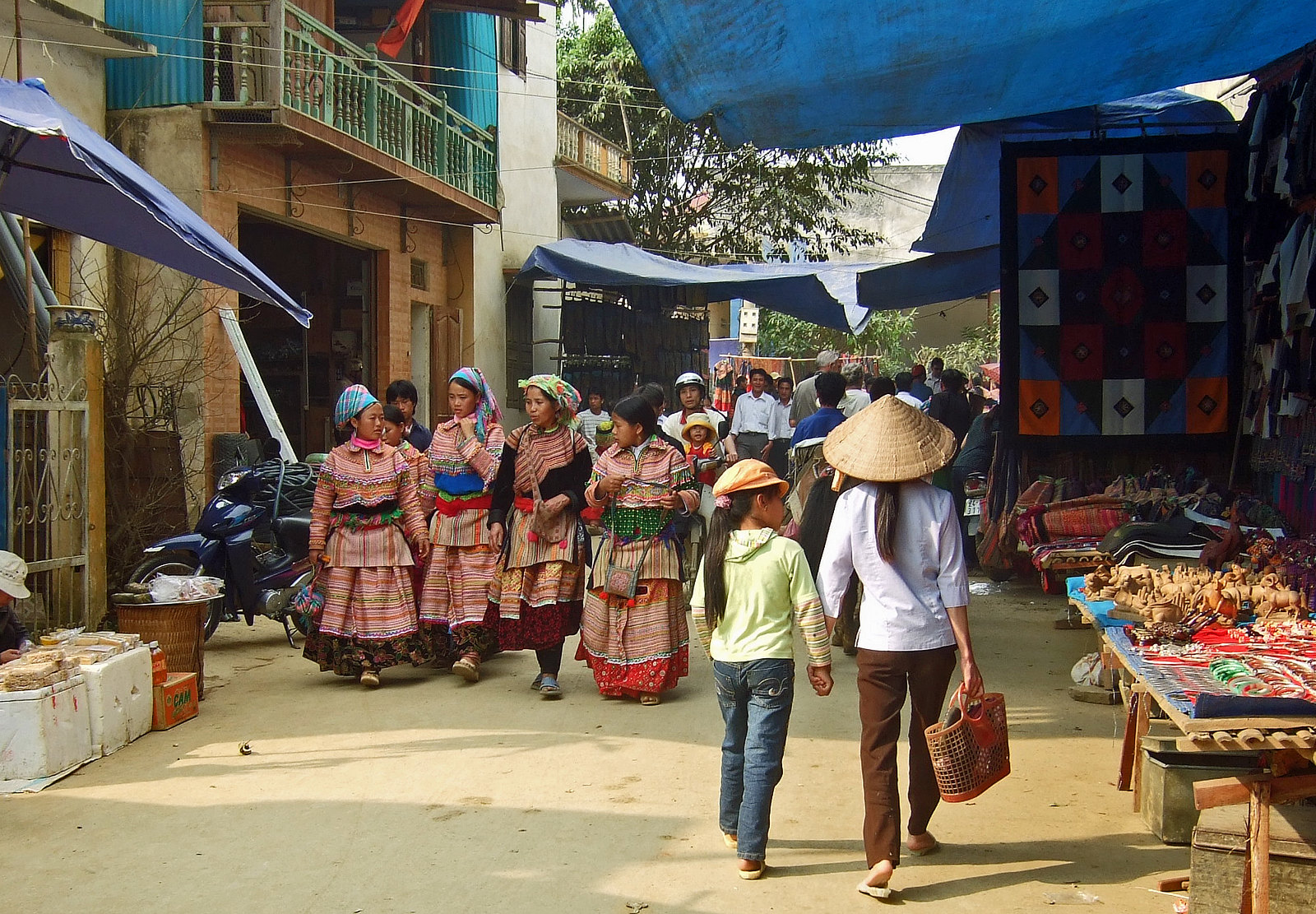
While most only visit Bac Hà for the Sunday Market, travelers should consider booking a multi-day stay to explore everything that this beautiful area has to offer.
Main Attractions
While Lào Cai seems like such a remote destination, there is a lot to do in this mountainous province. Tourists have fallen in love with places like Sapa and visiting Vietnam’s northwestern mountains is guaranteed to be a magical experience. Whether interacting with the locals or heading into nature, the Lào Cai Province is a destination that can’t be missed.
Summit Fansipan Mountain
Standing at around 3,147 m (910,326 ft) tall, Fansipan is the tallest mountain in Vietnam and the Indochinese Peninsula. Tourism to the peak is increasing with the development of a cable car that can take visitors up to the summit. People also have the choice of hiking to the summit.
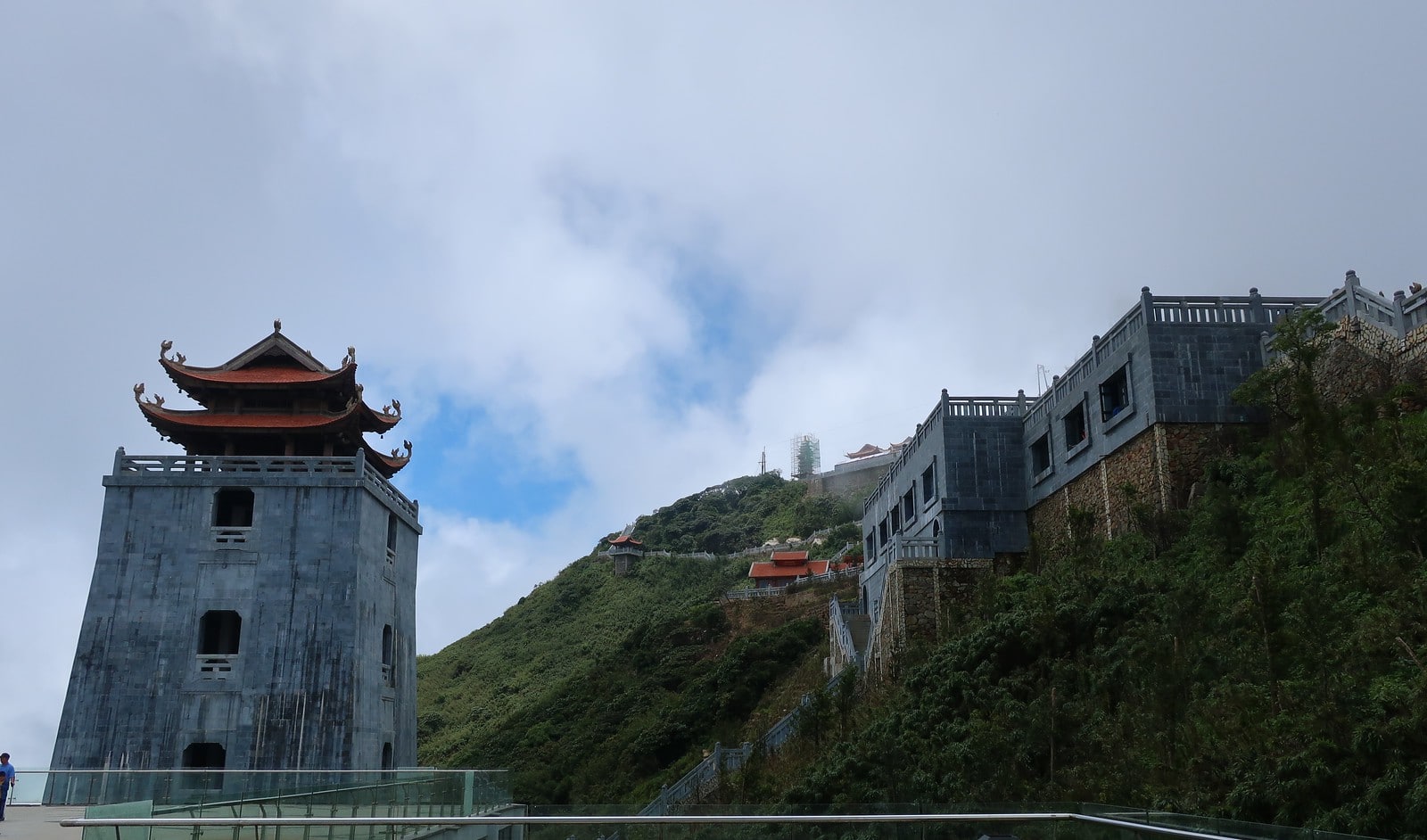
Though, hikers should be prepared for a strenuous and long journey as the trail is steep and summiting Fansipan can take up to 3 days if traveling on foot. At the summit of the mountain, there is a small park that includes attractions like shops, cafes, and a Buddha statue.
Check Out the Thac Bac Waterfall
Another place that visitors should check out in the Lào Cai Province is the Thac Bac Waterfall. Called the Silver Waterfall in English, this cascade is just below the O Quy Ho Pass and is considered one of the most beautiful waterfalls in Vietnam. The falls sit at an elevation of about 1,800 m (5,906 ft) above sea level.
Grand in scale, waterfalls from 200 m (656 ft) above the valley floor. Visitors can take a short drive from Sapa to the San Sa Ho Commune to visit the waterfall. The park around the waterfall is open daily and guests are required to pay an entrance fee.
Visit the Hoàng Liên National Park

One entrance to the Hoàng Liên National Park is just 9 km (5.6 mi) outside of Sapa. Given the title of a national park in 2006, the park and the Hoang Lien Range protect Vietnam’s tallest mountains, including Fansipan. The park is extremely remote, but there is still a lot to see. Visitors can summit the four tallest peaks in Vietnam or wander amongst the near-endless trekking trails.
Special Events
To bring in more tourists to the province, Lào Cai has a few festivals that have become big attractions. One festival called the Worshipping Forest is held on the 29th day of the first lunar month to honor the Father and Mother trees. Held in the Muong Khuong District, people gather to sing and dance in celebration of the local forests.
The festival is also a time when people are reminded to take care of nature. Taking place on the 10th day of the first lunar month in the Bac Hà District, the Gau Tao Festival is a celebration and showcase of the local Hmong culture.
Weather
With mountainous terrain, the Lào Cai Province is unlike other destinations in Vietnam because there are more than 2 seasons. While the area does experience a wet and dry season, the mountains in Lào Cai also have a true winter, which means that snowfall and extremely low temperatures are normal during the winter months.
For tourists, the best time to visit the Lào Cai Province is during the months of March, April, and May. During the spring, there is less rain, and it is just before the heat of summer begins to impact the area. However, many tourists choose to visit in the summer months, despite the heat, which makes June, July, and August the busiest months for tourism in the Lào Cai Province.
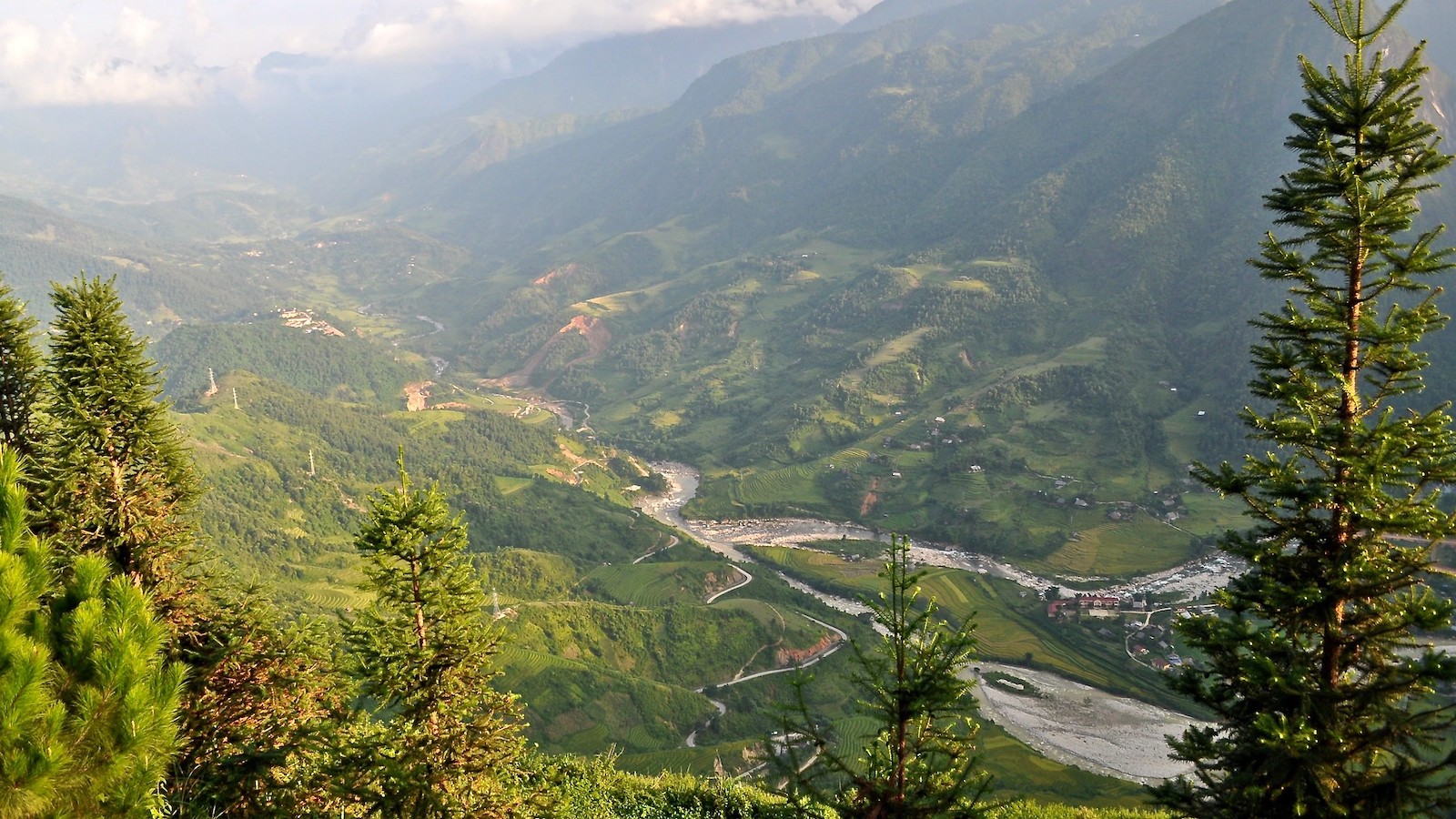
Highly underrated, the Lào Cai Province is one of the most beautiful and unique places in Vietnam. With epic mountain views, green valleys, and plenty of fresh air, travelers will love exploring this untouched landscape. As tourism in the province grows, expect there to be big crowds in the coming years. Though, with so much open land in Lào Cai, travelers can enjoy time off the grid too.
Activities near Lao Cai Province
Amusement Park:
Historical Sites:
Markets:
Mountains
Museums:
National Parks
Rivers:
Towns:
Transportation:
Waterfalls:
- Silver Waterfall (11km)
Latest in Lao Cai Province
View more Lao Cai Province articles


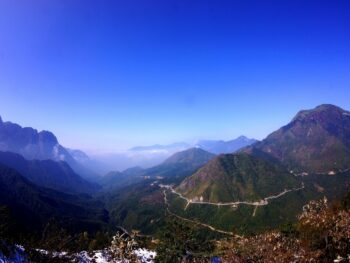

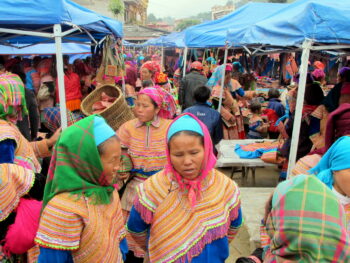

 Khanh Hoa Province, Vietnam
Khanh Hoa Province, Vietnam